What do you get when you mix milk, food colors, and dishwashing soap? You get amazing dancing colors! Find out how this work in this fun experiment. Hint: it’s all about polarity!
Article Contents
1. What Is Polarity?2. Science Behind The Colorful Milk Polarity Experiment
3. Materials Needed For The Colorful Milk Polarity Experiment
4. How to Make Colorful Milk Polarity Experiment Instructions
5. What Will You Develop And Learn
What Is Polarity?
Chemical Polarity is a property of a molecule that describes the distribution of the electrical charge inside of it. When atoms inside of molecule don’t have the same electronegativity, atoms inside of molecule are not distributed equally. And that causes an asymmetrical or polar electric field.
You probably noticed that some liquids mix well and some don’t. For example, water and sugar mix while water and oil keep separated. Why is that? Molecules of the different polarities don’t mix, in this case, both sugar and water are polar molecules and the oil is nonpolar.
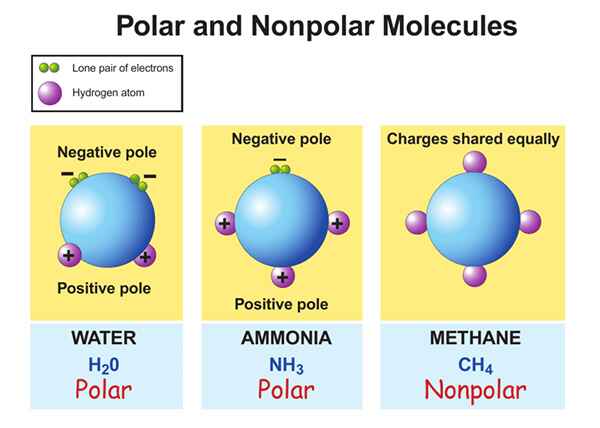
The molecule is polar when there is a difference in electronegativity of its atoms. And molecule is nonpolar when there is similar electronegativity between its atoms. Electronegativity describes how easy is for an atom to receive electrons.
If you want to know more details about polarity, please read our Lava lamp experiment article, where we discuss the topic of polarity even further.
Science Behind The Colorful Milk Polarity Experiment
Milk contains a few different ingredients, mostly water, but also some minerals, proteins, and fat. And we already learned water is a polar molecule while all fats are nonpolar.
But what about the dish soap? Soap is used primarily for washing different types of grease and dirt, stuff that water can’t dissolve by itself. And to be able to do that effectively it must be able to mix with nonpolar molecules.
On the other hand, we know that we can mix soap with water and get a bubbly solution. How is that? Well, a soap molecule is made out of a long nonpolar tail and short polar head, so it can mix with both types of molecules!
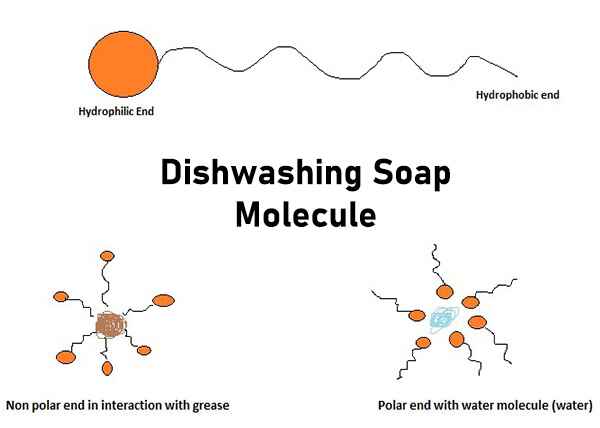
When we put soap into the milk, the nonpolar tail will collect fat molecules, while the head will mingle with the water molecules. In all that movement, the food colors are pushed around and we can observe a real visual spectacle.
Materials Needed For The Colorful Milk Polarity Experiment
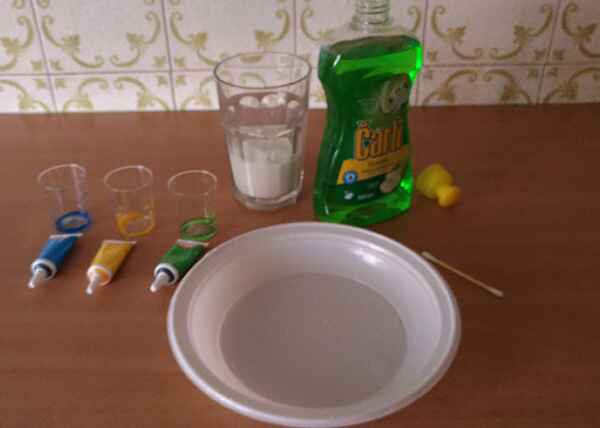
- Plate. Any kitchen plate you find will be good here as long as it is able to hold liquid.
- Milk. 1 deciliter of milk will be enough. Make sure you cover the whole bottom of the plate with milk. That will be enough for our experiment. Also, milk with more fat will be even better for this experiment.
- Food colors. Food colors are light enough to easily move on the surface of milk. We can also try with different colors – like acrylic colors for example. It’s advisable to use 2 or more colors for the best visual effect.
- Dishwashing soap. Any dishwashing soap you have in the kitchen will be good. Only 1 drop is needed for our polarity experiment.
- Cotton swab. A cotton swab would be useful since, with it, we can easily apply a small amount of dishwashing soap to our experiment. If you don’t have a cotton swab, you can just pour 1 drop of dishwashing soap on the plate.
How to Make Colorful Milk Polarity Experiment Instructions
If you would rather watch the video on how to do the activity, you can find it at the beginning of the article. And for step by step instructions, continue reading below.
- Pour the milk into the plate. Depending on the plate size, you will need enough milk to cover the bottom of the plate.
- Put a few drops of food coloring in the middle of the plate. Be sure to add a few drops of each color you decide to use. Food colors are great here. If you decide to use acrylic colors or some other colors that are thick or dense, you can use a few drops of water to dilute them.
- Soak the cotton swab into the dishwashing soap. Sink one side of the cotton swab into the bottle of dishwashing soap to soak it. That will be enough for the activity. If you don’t have a cotton swab, you can just add 1 or 2 drops of dishwashing soap into the middle of the plate.
- Touch the milk with a cotton swab. Touch the middle of the plate, where you added colors with a cotton swab soaked with dishwashing soap. Or add one or two drops of soap to the middle of the plate. Enjoy the spectacle of the dancing and moving colors!
What Will You Develop And Learn
- Chemistry knowledge. By conducting this experiment, we will learn about polarity and molecules. This will develop our knowledge about chemistry and chemical processes.
- Concept of polarity. We will learn about polar and nonpolar molecules. Also, we will learn about electronegativity and how molecules interact with each other.
- What is dishwashing soap and how does it work. Dishwashing soap has a unique molecular structure and we will learn all about it.
- Mixing colors. We will improve and/or refresh our knowledge about colors and how they mix and how can mixing create different colors.
- How to conduct an experiment. We will conduct experiment and learn about basic concepts of the experimental method.
If you liked this experiment and would like to try even more fun chemistry experiments, we have some recommendations for you:
- For more kitchen chemistry experiments and learning about diffusion, check the How to Demonstrate Diffusion with Hot and Cold Water activity.
- If you are in search of something simpler, like an activity about learning colors, we recommend you check the Learning Colors – How to teach your Child about Colors activity.
- And for a fun sensory activity with colors, that is suitable for the youngest audience, check out the How to make Sensory Play Colors activity.
Happy learning!
If you’re searching for some great STEM Activities for Kids and Child development tips, you’re in the right place! Check the Categories below to find the right activity for you.
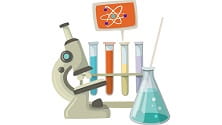
STEM Science
Videos, guides and explanations about STEM Science in a step-by-step way with materials you probably already have at your home. Find new Science ideas.
Read more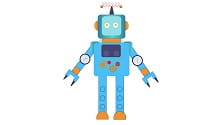
STEM Technology
Videos, guides and explanations about STEM Technology in a step-by-step way with materials you probably already have at your home. Find new Technology ideas.
Read more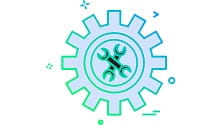
STEM Engineering
Videos, guides and explanations about STEM Engineering in a step-by-step way with materials you probably already have at your home. New Engineering ideas!
Read more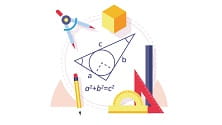
STEM Math
Videos, guides and explanations about STEM Math in a step-by-step way with materials you probably already have at your home. Find new Mathematics ideas.
Read more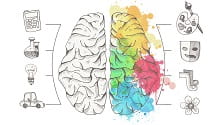
Psychology
Find out all about development psychology topics that you always wanted to know. Here are articles from child psychology and development psychology overall.
Read more
First year of Child’s Life
Following a Child’s development every month from its birth. Personal experiences and tips on how to cope with challenges that you will face in parenting.
Read more
3 thoughts on “How to Make Colorful Milk Polarity Experiment”